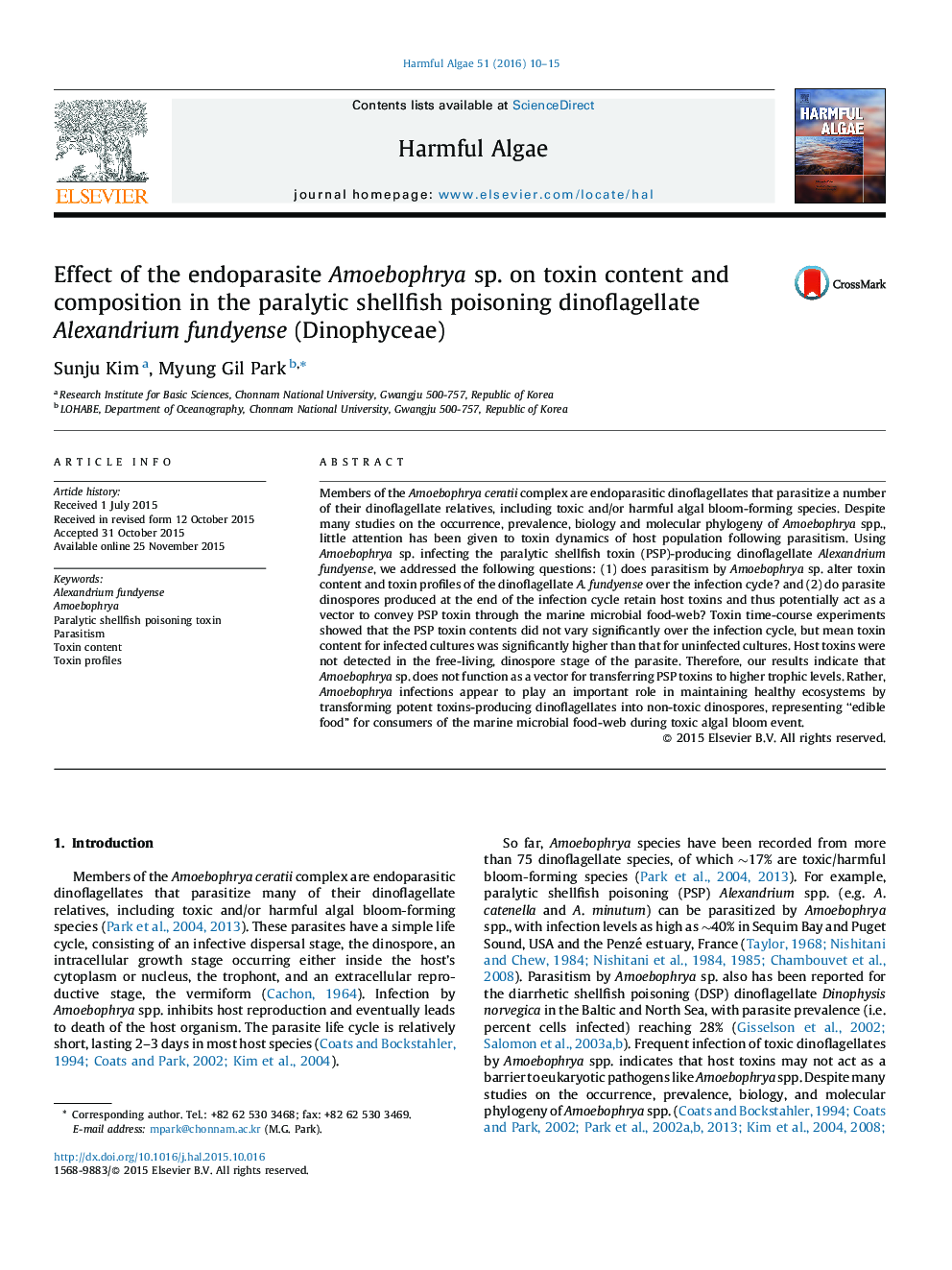| Article ID | Journal | Published Year | Pages | File Type |
|---|---|---|---|---|
| 4545157 | Harmful Algae | 2016 | 6 Pages |
Members of the Amoebophrya ceratii complex are endoparasitic dinoflagellates that parasitize a number of their dinoflagellate relatives, including toxic and/or harmful algal bloom-forming species. Despite many studies on the occurrence, prevalence, biology and molecular phylogeny of Amoebophrya spp., little attention has been given to toxin dynamics of host population following parasitism. Using Amoebophrya sp. infecting the paralytic shellfish toxin (PSP)-producing dinoflagellate Alexandrium fundyense, we addressed the following questions: (1) does parasitism by Amoebophrya sp. alter toxin content and toxin profiles of the dinoflagellate A. fundyense over the infection cycle? and (2) do parasite dinospores produced at the end of the infection cycle retain host toxins and thus potentially act as a vector to convey PSP toxin through the marine microbial food-web? Toxin time-course experiments showed that the PSP toxin contents did not vary significantly over the infection cycle, but mean toxin content for infected cultures was significantly higher than that for uninfected cultures. Host toxins were not detected in the free-living, dinospore stage of the parasite. Therefore, our results indicate that Amoebophrya sp. does not function as a vector for transferring PSP toxins to higher trophic levels. Rather, Amoebophrya infections appear to play an important role in maintaining healthy ecosystems by transforming potent toxins-producing dinoflagellates into non-toxic dinospores, representing “edible food” for consumers of the marine microbial food-web during toxic algal bloom event.
